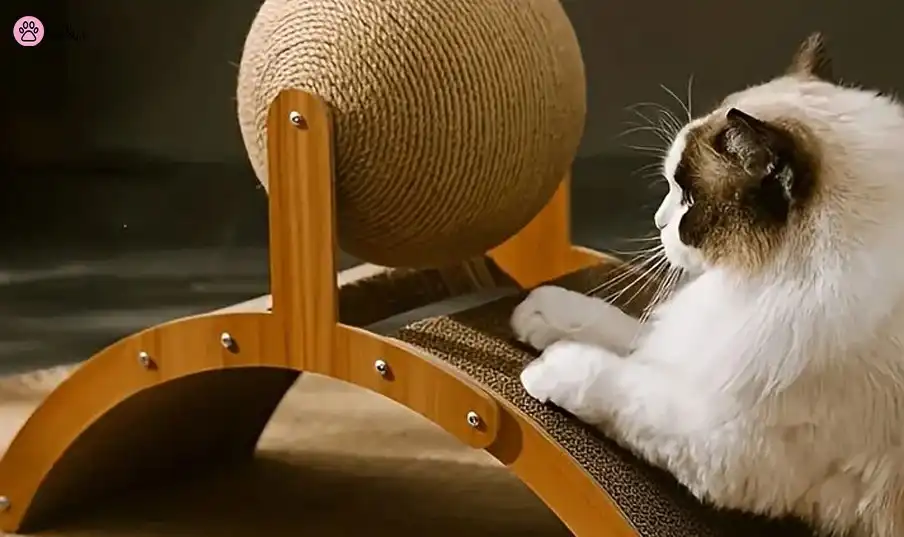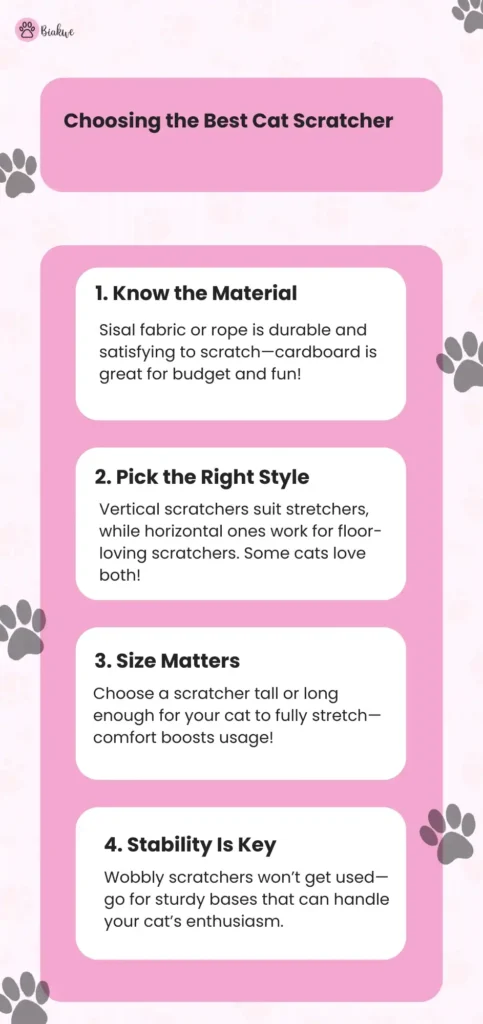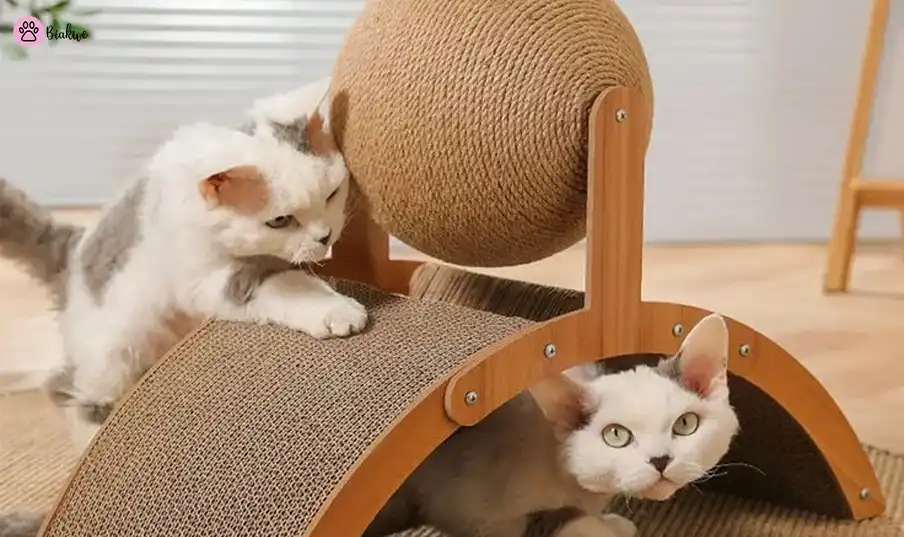Ever watched your cat on a scratcher, totally zoned in and loving every claw mark? I remember when I brought home our first scratching post; it was a total game-changer. My couch finally caught a break!

Scratching is a natural cat habit, helping with muscle stretch, claw care, and territory marking. But without a proper place, your furniture becomes the target. That’s where the right cat scratcher steps in.
In this blog, we’ll explore why scratchers matter, the types available, and how to choose the perfect one to keep your cat happy and your home scratch-free.
Why Do Cats Need Scratchers?
It is an identity of cats to scratch. It keeps their claws neat, in good condition, and clean. The fun thing is you always enjoy seeing your cat on scratcher. Scratching scrapes off the outer layer of their nail and stretches it well. Cats can be very persevering and may scratch your sofa or curtains without a scratching post.
Scratching also helps cats feel relaxed. It helps them to relieve their stress, expend energy, and scent their territory. It’s not a habit, it’s a need. By providing your cat with an appropriate scratcher, you will end up with a more satisfied pet and with fewer scratch marks at home. It is a game of win-win wherever you and your furry friend are concerned.
Types of Cat Scratchers
The variety of scratchers is large, and every type fits various cats.
- Vertical posts: They are vertically oriented and very strong, which is terrific in the case of high-climbing cats. They tend to be regarded as the best cat scratching posts used by playful cats.
- Horizontal pads: Horizontal pads were flat on the ground. These are ideal because cats that are elderly or scratch low are ideal.
- Cardboard cat scratchers: They are cheap, light and fun. Cats adore the texture given to many, but it does not last as long as wood or sisal ones do.
- Wall-mounted or combo scratchers: They take up less space and tend to combine both shelves and scratching places. They are ideal in houses with small floor space.
Experiment with some of them until you find out what your cat likes. Look your cat on scratcher and analyze what it likes. The presence of a variety of styles may discourage your cat from sitting on your furniture.
How to Choose the Best Cat Scratcher
When selecting the best scratching post for cats, a small number of factors should be put into consideration.
- The first thing to look at is height. In case your cat prefers to stretch out high, a taller post can be one of your choices. In cats with low-level scratching, a different scratcher is more useful, flat or angled.
- The material is important as well. The scratching posts are usually made of sisal, carpet/cardboard and are mostly used by cats. Sisal is also durable and hard, whereas cardboard is soft and fun but wears out fast.
- Ensure that the scratcher is steady. Your cat may run off because of a shaky post. Pay attention to the behavior of your cat. Does he scratch furniture, carpets, or doors? Base your decision on that information.
- Finally, select what is within the size and taste of your house. There are also some sleek, modern-looking scratchers, and then there are the simplistic and basic ones.
- The ideal scratcher is the one that is used by your cat and is manageable in your house. Always look cat on the scratcher and make the final decision of the type your cat is comfortable with.

Where to Place the Scratcher
- It does not just matter what kind of scratcher you use; it also matters where you place the scratcher. Put it in the places where your cat likes to hang out at night. Cats will stretch and scratch as soon as they are awake. It can also be fixed next to items they have already scratched to curb the habit.
- You can also place the scratcher near the coach which your cat love being on.
- Bring toys or treats, or catnip for your cat, to the new place. This is done to make it fun and rewarding. You will notice cat on scratcher becoming a new activity.
- Cats also enjoy marking their territory, so do not place the scratcher somewhere in a corner. It is an indicator that you have the scratcher in the most suitable position when you observe your cat using it daily.
Tips to Encourage Use
- Getting your cat to love their scratcher will need some time. You need to begin as soon as possible, because you are dealing with a kitten who quickly learns habits. It can be done even in case your cat is already old, but it takes some steps.
- Locate the scratching post in a location that your cat likes and reward them when they scratch it. A praise, or snack or a break playtime will do.
- Do not punish them when they scratch furniture. Instead, take them to the scratcher rather politely. Use some catnip or hang a toy over the place to create an interest in him.
- Once the scratcher gets rough, renew it. You could also change places to make it interesting.
- Finally, observe your cat on the scratcher to better understand the taste of your cat.
When to Replace a Cat Scratcher
There is not even a single cardboard scratching mat that is made for a lifetime. Even the best cardboard cat scratcher will not last forever.
The wear and tear will happen gradually through the claws of your cat. Look out for things such as deep cuts or loose pieces, or whenever it starts to wobble. A jagged or unsteady scratcher might be dangerous and might make your cat put off.
Another indication to change is that when your cat insists on ignoring it, it is time to change. Cats prefer texture and opposition, and the past scratching post might not seem satisfying any longer.
What is more, make sure that it is not too dirty or has claw pieces on it.

A simple cleaning may do the trick, and in some instances, it is more appropriate to get a complete replacement. Stringing things out will make your cat maintain interest and be happy.
For more pet care tips, visit our site Biakwe
